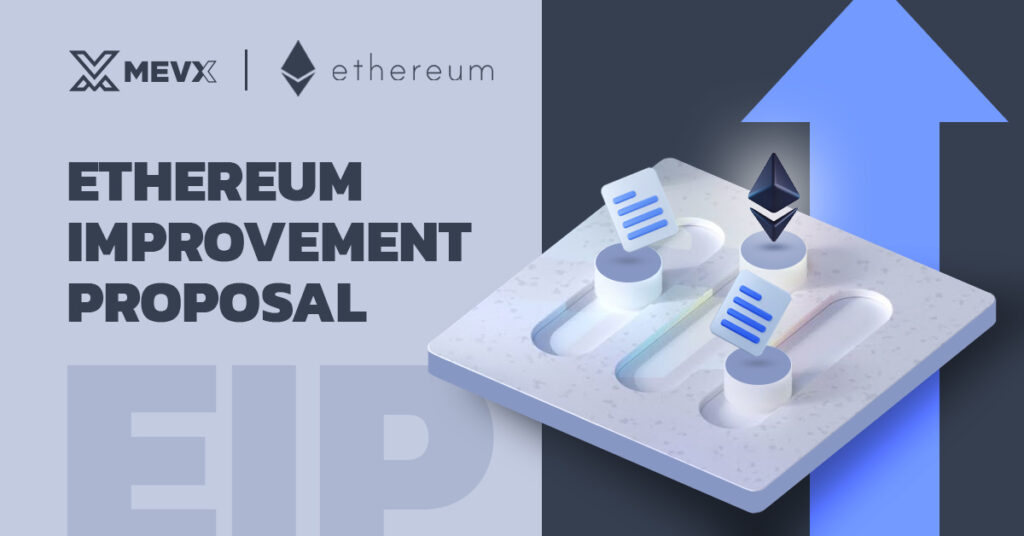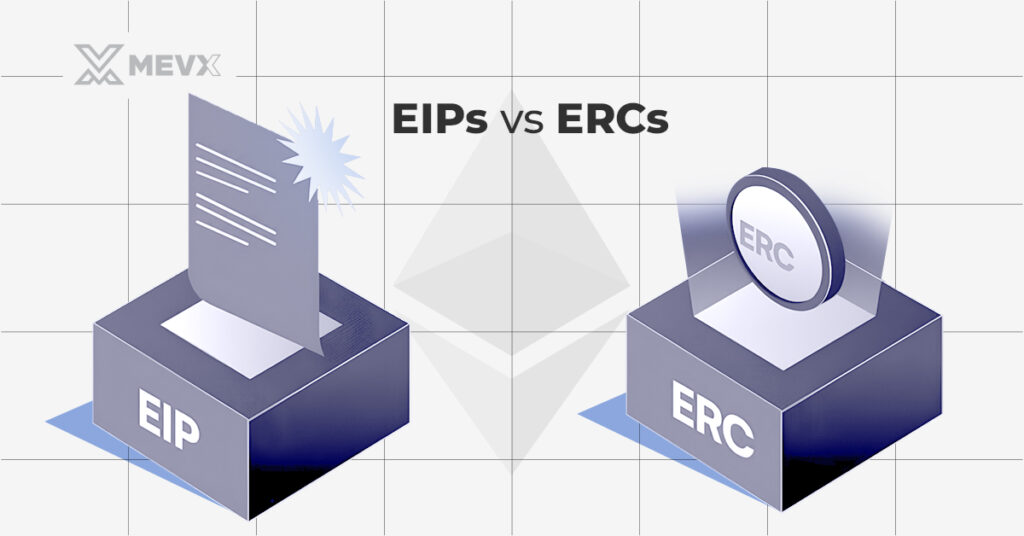Ethereum is a constantly evolving blockchain network, adapting to technological advancements and community needs. One of the primary mechanisms driving these changes is the Ethereum Improvement Proposal (EIP) system. EIPs serve as formal suggestions for upgrades or modifications to the Ethereum network, ensuring its continuous development in a decentralized manner.

What is an Ethereum Improvement Proposal (EIP)?
An Ethereum Improvement Proposal (EIP) is a structured document that outlines technical changes or enhancements to the Ethereum network. These proposals originate from developers and community members who wish to refine Ethereum’s functionality, scalability, and overall efficiency. Unlike centralized systems where upgrades are dictated by a single entity, EIPs foster a community-driven approach to development.
EIPs can range from minor software improvements to significant network modifications requiring a hard fork, where the blockchain splits into two separate versions. A successful EIP must undergo a thorough review, discussion, and approval process before being implemented into Ethereum’s core protocol.
EIPs vs. ERCs: Understanding the Difference
A common point of confusion in Ethereum development is the distinction between Ethereum Improvement Proposals (EIPs) and Ethereum Request for Comments (ERCs). While both contribute to Ethereum’s growth, they serve different purposes:

- EIPs propose improvements to the Ethereum network itself, covering aspects such as consensus changes, protocol enhancements, and networking upgrades.
- ERCs define standards for developers building on Ethereum, such as token standards (ERC-20 for fungible tokens, ERC-721 for NFTs) and smart contract interactions.
Essentially, ERCs are a subset of EIPs focused on application-layer innovations rather than core protocol changes.
The Impact of EIPs on Ethereum
EIPs play a crucial role in Ethereum’s ecosystem, providing a structured pathway for innovation. By enabling community members to propose, discuss, and implement changes, Ethereum ensures that improvements align with the network’s long-term goals. Some of the most significant changes in Ethereum’s history have originated from EIPs, including:
- EIP-1559: Introduced a new fee structure, improving transaction predictability and reducing inflationary pressure on ETH.
- EIP-3675: Paved the way for Ethereum’s transition from Proof-of-Work (PoW) to Proof-of-Stake (PoS), a milestone known as The Merge.
- EIP-4844: Aimed at reducing Layer 2 transaction costs by implementing blob-carrying transactions, a precursor to full Danksharding.
These and many other EIPs on Ethereum continue to shape Ethereum’s future, making it more secure, scalable, and efficient.
Types of EIPs
EIPs are categorized into different types based on their scope and purpose:
1. Standards Track EIPs: Affect Ethereum’s core protocol, network rules, and consensus mechanisms.
- Core EIPs: Require a network-wide consensus change (e.g., EIP-1559).
- Networking EIPs: Focus on Ethereum’s communication protocols.
- Interface EIPs: Define changes to Ethereum client APIs and user interactions.
- ERC EIPs: Standardize token functionalities, smart contracts, and other application-level improvements.
2. Meta EIPs: Address Ethereum governance processes and decision-making frameworks.
3. Informational EIPs: Provide guidance or recommendations without enforcing network changes.
The EIP Process: From Idea to Implementation
The journey of an EIP from conception to deployment follows a structured pathway:
- Idea: A pre-draft stage where an initial concept is formed.
- Draft: The first formally tracked version, submitted to Ethereum’s EIP repository.
- Review: Open for peer review and community feedback.
- Last Call: A final review period, typically lasting 14 days.
- Final: The EIP is formally accepted and ready for implementation.
- Stagnant: If an EIP remains inactive for six months, it is moved to this state.
- Withdrawn: The proposer decides to retract the EIP.
- Living: Reserved for EIPs that require continuous updates (e.g., EIP-1, which outlines the EIP process itself).
This process ensures that proposed changes undergo rigorous examination before being adopted, maintaining Ethereum’s reliability and decentralization.
Contributing to Ethereum’s Development
Anyone can contribute to Ethereum’s evolution by submitting an EIP. The process involves:
- Reviewing EIP-1, which outlines the proposal guidelines.
- Drafting the EIP using the provided template.
- Submitting a pull request to Ethereum’s official EIPs repository on GitHub.
- Engaging with the community for feedback and improvements.
Ethereum’s decentralized nature allows developers and stakeholders to actively participate in shaping its future, fostering a culture of innovation and transparency.
Summary
Ethereum Improvement Proposals (EIPs) are the backbone of Ethereum’s continuous growth and refinement. By providing a structured approach to network upgrades, EIPs empower the community to drive innovation, ensuring Ethereum remains at the forefront of blockchain technology. Whether through fundamental protocol changes, governance enhancements, or new token standards, EIPs play a pivotal role in making Ethereum more scalable, efficient, and user-friendly. As the network evolves, EIPs will continue to shape its journey, reinforcing its status as the leading smart contract platform in the blockchain space.
Further Reading
Ethereum: The ‘World Computer’ Transforming Blockchain and Finance
How Does the Ethereum Blockchain Work?
Ethereum Token Ecosystem: A Comprehensive Guide to ERC-20, ERC-721, and ERC-1155
